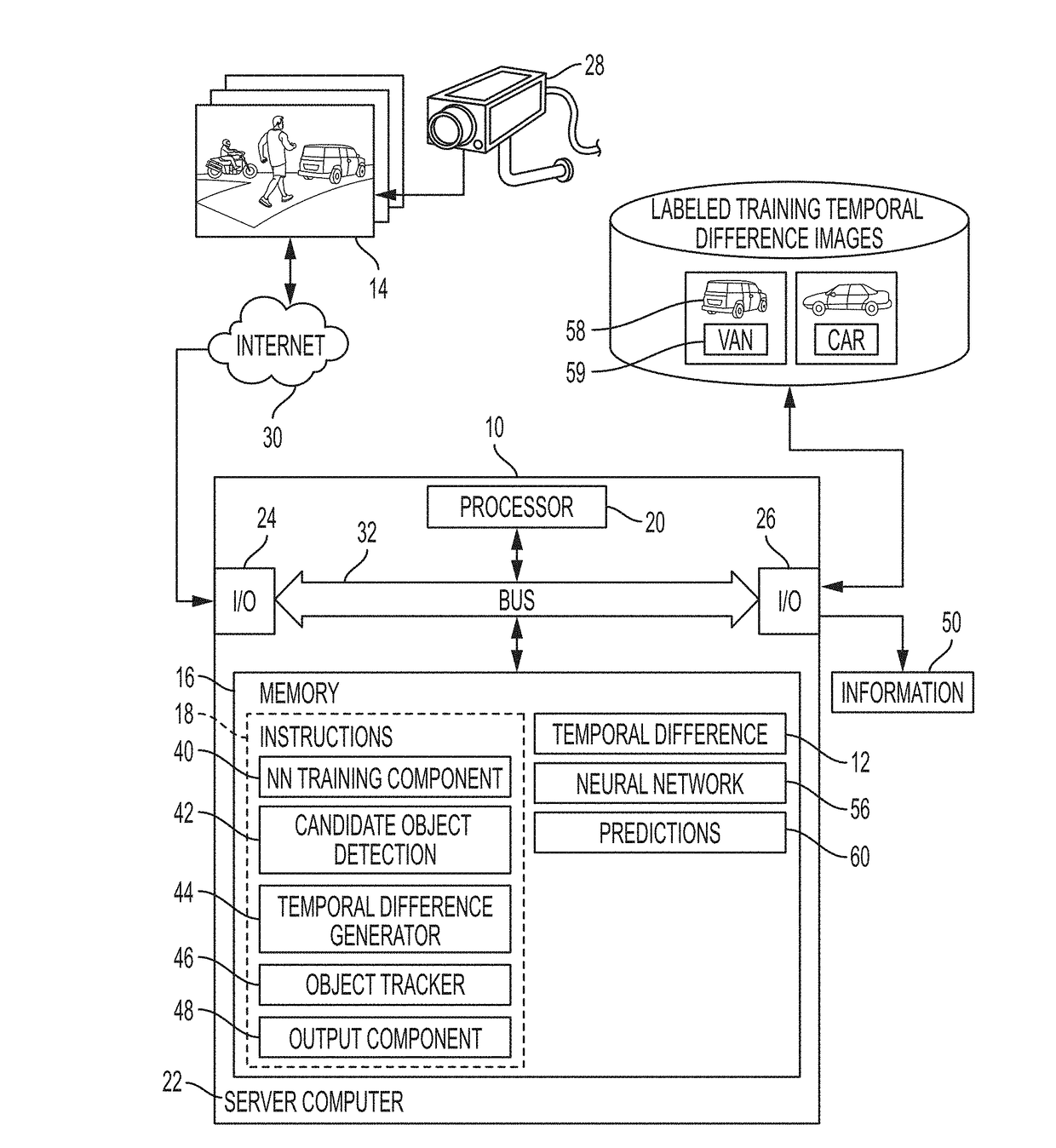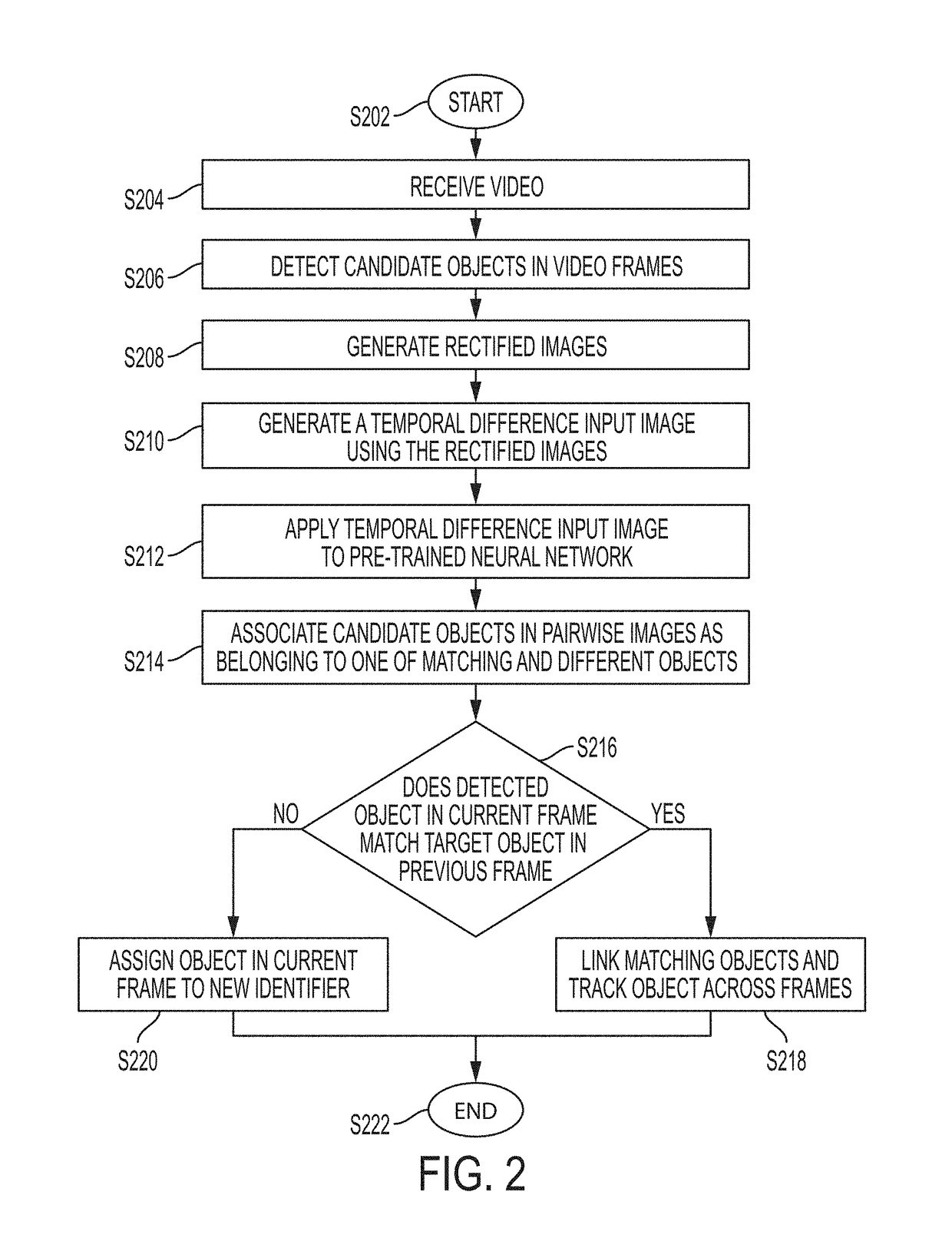Deep data association for online multi-class multi-object tracking
a multi-object tracking and deep data technology, applied in image enhancement, scene recognition, instruments, etc., can solve the problems of cnns not being practical in the case of video, scalability problems, and crowded scenes
- Summary
- Abstract
- Description
- Claims
- Application Information
AI Technical Summary
Benefits of technology
Problems solved by technology
Method used
Image
Examples
example
[0065]Multi-object tracking performance was evaluated on a publicly-available KITTI tracking challenge disclosed by A. Geiger, P. Lenz, and R. Urtasun in “Are we ready for autonomous driving? The KITTI vision benchmark suite”, CVPR, 2012. Videos were recorded from a moving platform while driving in and around a city-of-interest. The dataset was designed to investigate how computer vision algorithms perform on real-world data typically found in robotics and autonomous driving applications. These sequences had a high resolution of 1242×375, and varied significantly in terms of number of frames, number of objects, camera motion, and imaging conditions. Training videos (8000 frames) were used to learn our models. The ground truth tracks of the test videos are not publicly available. Therefore, the evaluation was conducted by uploading result tracks on the KITTI challenge evaluation server, which did not allow for repeated submissions within 72 hours. Public regionlets detections, disclo...
PUM
 Login to View More
Login to View More Abstract
Description
Claims
Application Information
 Login to View More
Login to View More - R&D
- Intellectual Property
- Life Sciences
- Materials
- Tech Scout
- Unparalleled Data Quality
- Higher Quality Content
- 60% Fewer Hallucinations
Browse by: Latest US Patents, China's latest patents, Technical Efficacy Thesaurus, Application Domain, Technology Topic, Popular Technical Reports.
© 2025 PatSnap. All rights reserved.Legal|Privacy policy|Modern Slavery Act Transparency Statement|Sitemap|About US| Contact US: help@patsnap.com



